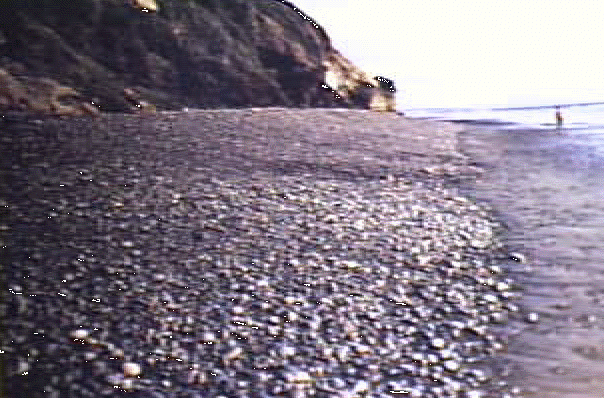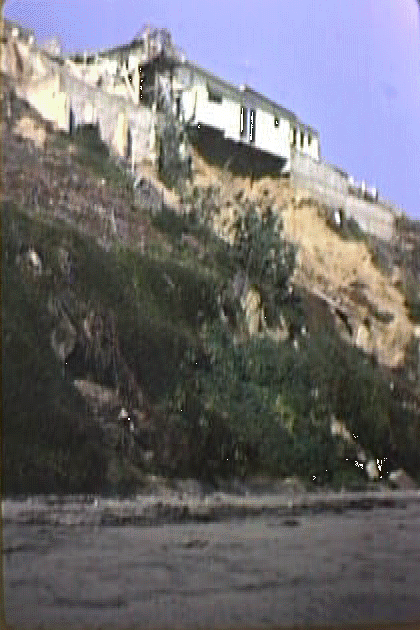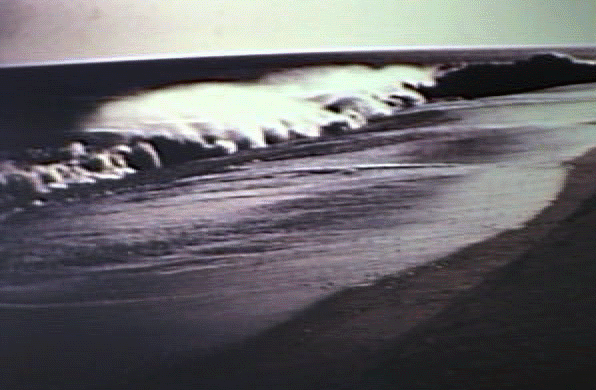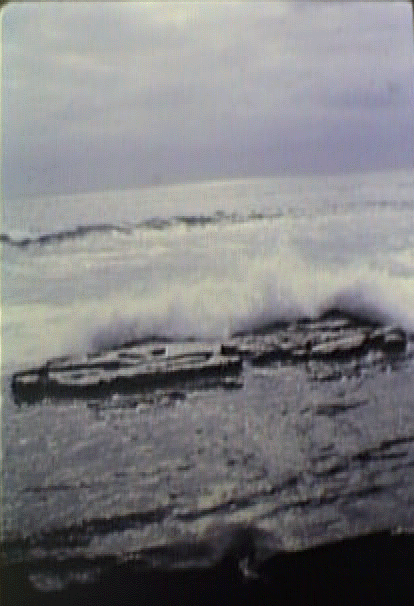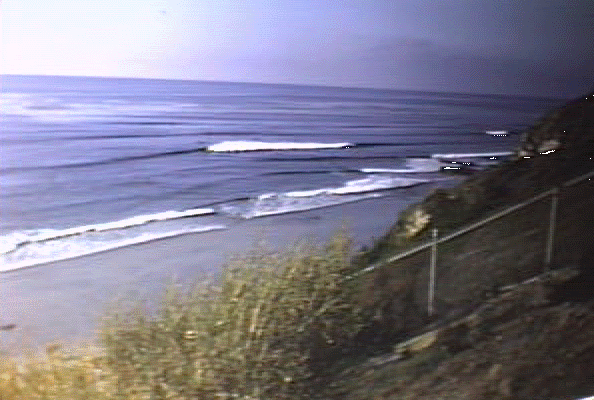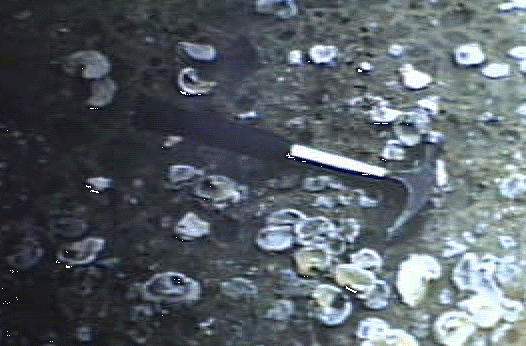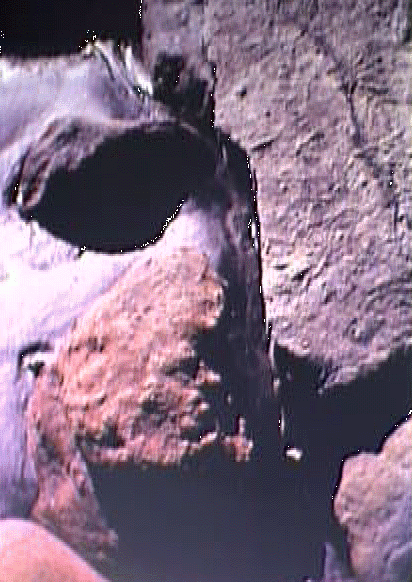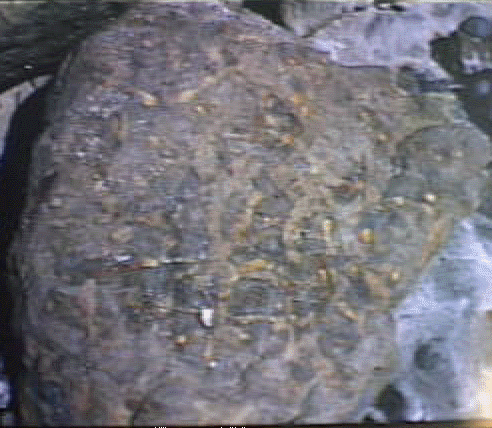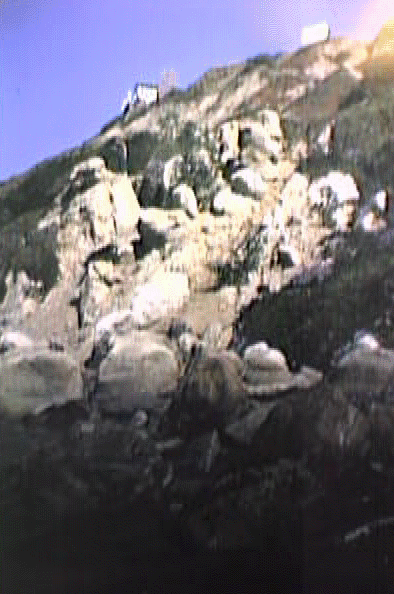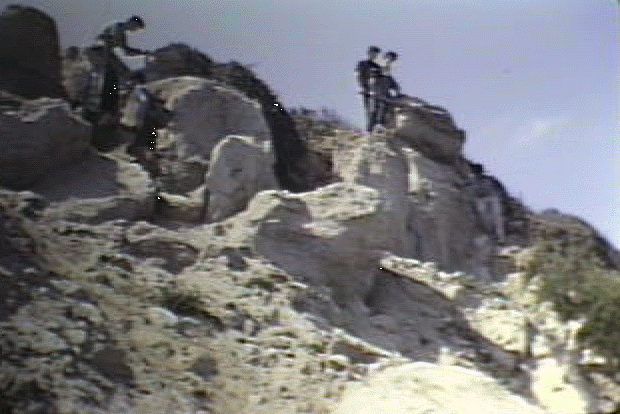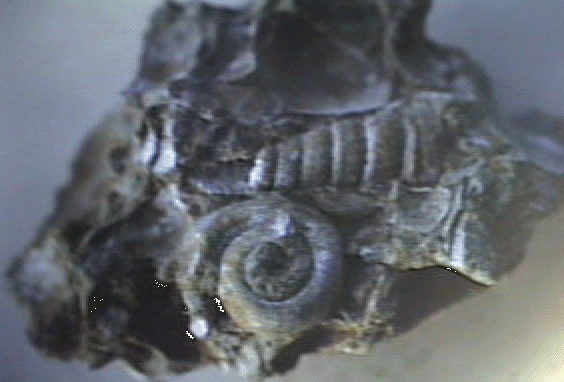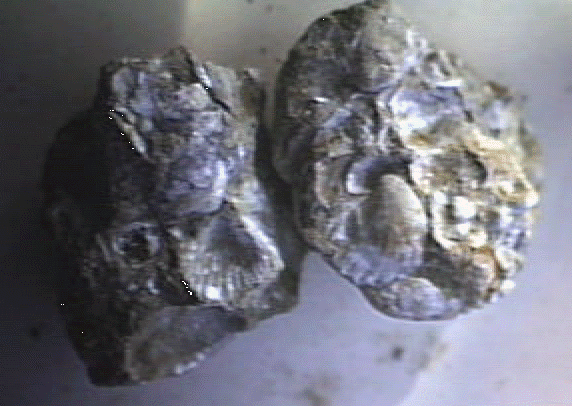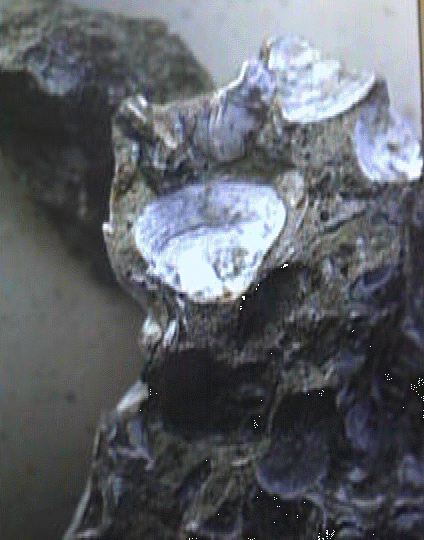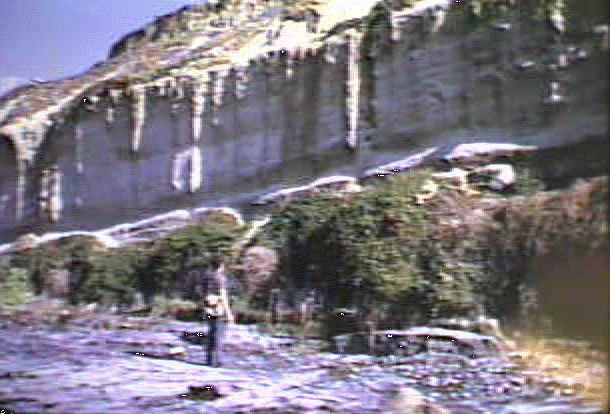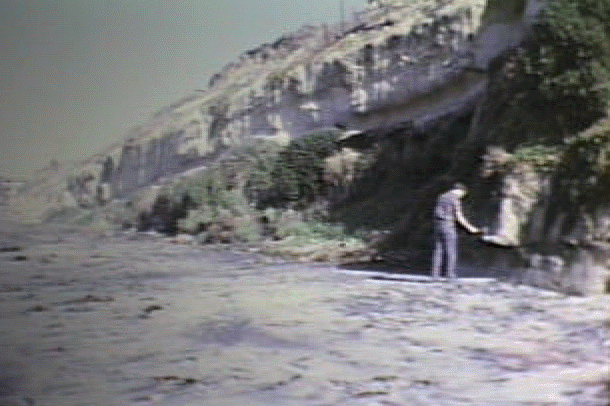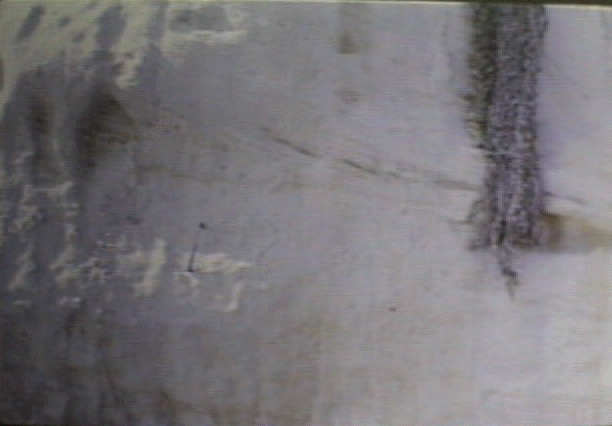| The Del Mar Formation is the major rock unit exposed in this area. Note that the cliffs are being undermined and are dangerous. |  |
|
The formation has been dated upper Eocene in age by the abundant fossils found in several layers of the formation. |
 |
|
The formation has been dated upper Eocene in age by the abundant fossils found in several layers of the formation. |
 |
| The formation consists of alternating beds of sandstone, shale, and siltstone, indicating a near shoreline environment of deposition. |  |
| The presence of abundant carbonaceous material and what appears to be sulfer, indicate that at times, the environment was similar to that of a lagoon filled with much silt and organic debri. |  |
|
Some layers consist almost entirely of fossil remains, indicating a shallow water marine environment. |
 |
| Some layers consist
almost entirely of fossil remains, indicating a shallow water marine environment.
|
 |
| The contacts between the various rock layers, mark changes in the depositional environment. |  |
|
One might invision a site of deposition where sea level was fluctuating between a brackish water, silt laden, shallow water environment, similar to that seen in the nearby lagoons today |
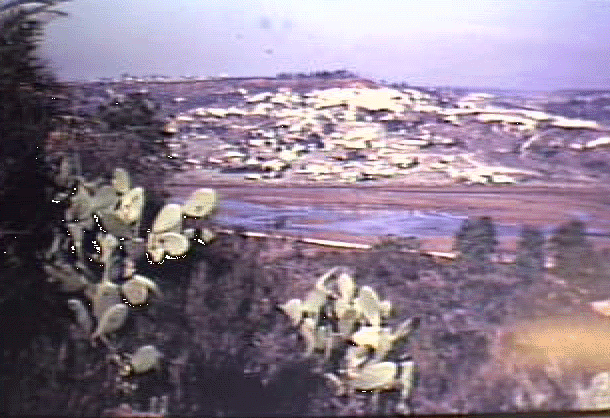 |
|
to a relatively shallow water marine site of deposition. |
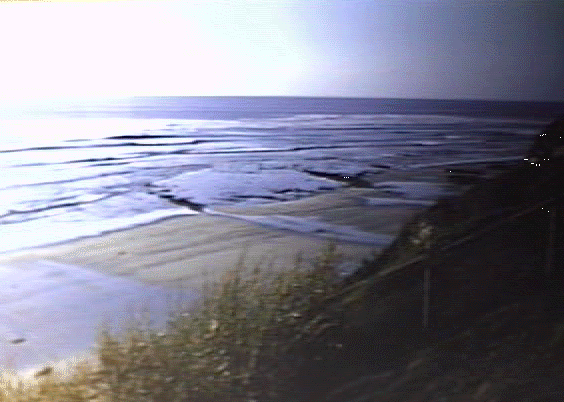 |
|
Sedimentary rocks that may be collected, include poorly cemented sandstone, shale and biostrome (a rock containing abundant organic remains) |
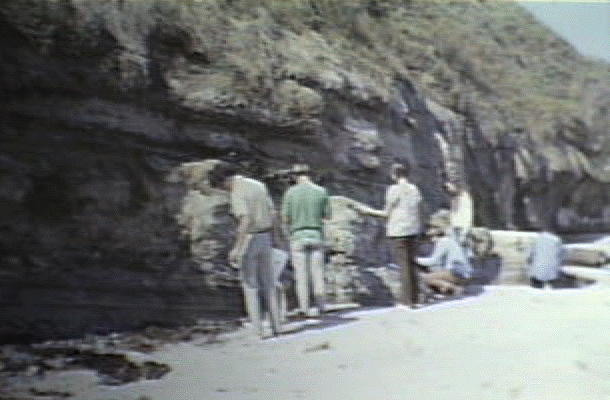 |
